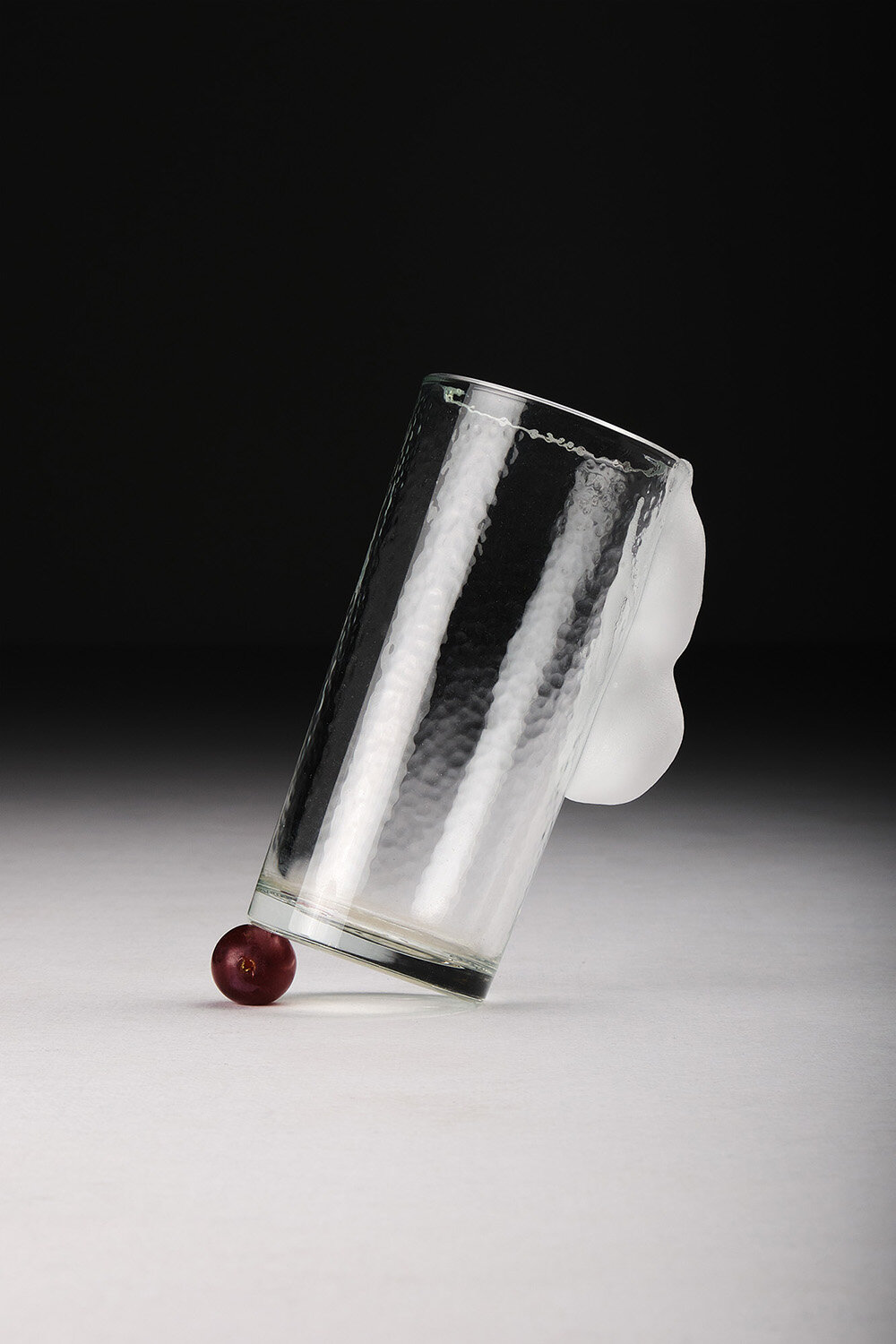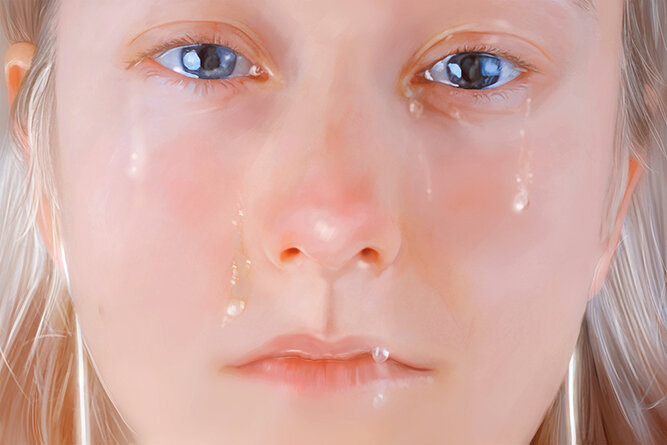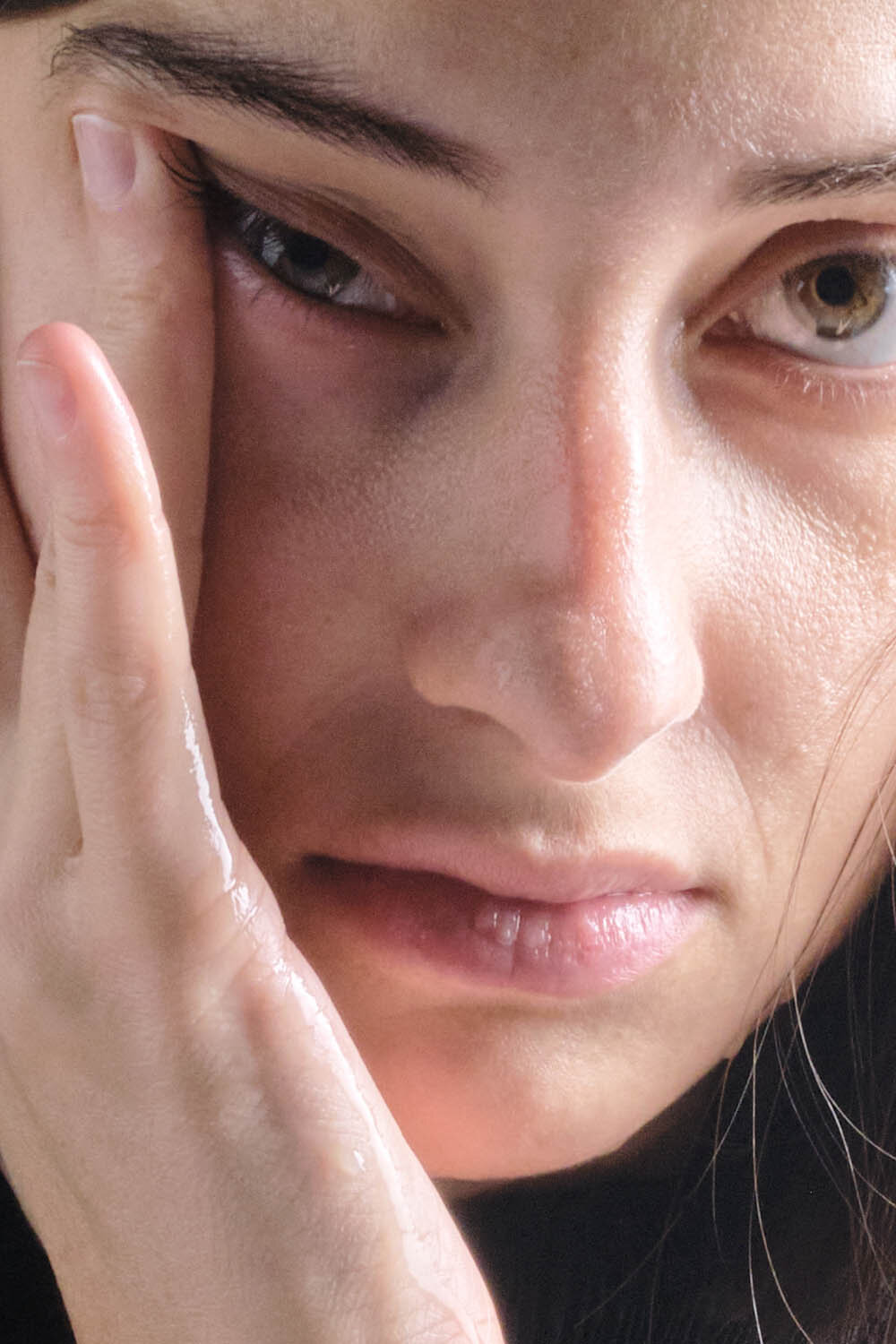Sara Bastai
From series ‘There is no spoon’ - AREA OF WORK workshop at ECAL
Coming from a graphic design background, Sara Bastai is an artist in constant metamorphosis. Her observing eye makes the most banal moment into something that is full of tension and emotions. She describes herself as an image maker above all, but her images evoke worlds that go way beyond their 2D format.
In our conversation, we discussed some of the themes behind her practice — the issues of an increasingly digital existence, the threat of living by algorithms and the importance of learning from the past and moving forward as a collective.
She has just completed a master’s degree in Photography at ECAL and recently released major projects as ‘O Peso da Borboleta’ (The Weight of the Butterfly) and ‘14428798’.
From series ‘Daylight Sins’
Coming from a graphic design background, what inspired you to turn to photography in the recent years?
I realised I wanted to pursue photography and art direction when working as a graphic designer in Barcelona. I came to the conclusion that I wanted to be more involved in developing the content itself, rather than just combing images and text beautifully. To gain more depth in creating images and concepts, I needed to have the qualifications that enabled me to follow a project from beginning to end, so I applied for the Photography master’s degree at ECAL. Ultimately, I want to be an image-maker that creates visuals with different elements and techniques to reach an outcome, not a photographer or a graphic designer.
From series ‘Daylight Sins’
Can you talk a little about the process you go through when creating the concept for an image?
I normally start a project by doing research, not only in theory but also in references, either more visual or arbitrary, let’s say. I like to find inspiration in everything, so I spend much time going through magazines, websites, Instagram, and just life, whatever is around me. I find this part actually the most exciting because I really dive in and find dots and interesting things in so many places, I do not like to have a narrow approach when doing my research. By that, I mean that it is not just because I am creating images that I am only looking at visuals. Then, I normally start to create mind maps with the main words that speak to me and mood boards concerning those words, or just the atmosphere of the world I want to build. After that, ideas surface and I start to materialise them and to test a lot. I am an artist, but I would say that I have a rational and theoretical approach when following my own process.
‘Unchained Melody’ in collaboration with Ines Maestre for Zelda Passini
Your project ‘Gel Illusions’ highlights some of your personal experiences and it somewhat works as a memory digital archive. In our fast paced world, do you think it is becoming more important to talk about our inner feelings and reflect on our memories?
Yes, I truly believe in that. In fact, I just finished writing my thesis about how we want to memorialise our society. To explain it briefly, I question how we can build a collective memory in the digital realm, while depicting humankind and going through different preservation methods, such as photography or even mummification, holograms, etc. The main goal is to reflect on how we are moving towards a world of digitalised and quantified existence. That might cause problems when creating the narrative, or the historical discourse we want to leave from our civilisation. We should focus on projecting our feelings and following the natural cycles of life more, rather than living in an era that worships data, as it is becoming the new currency.
‘Unchained Melody’ in collaboration with Ines Maestre for Zelda Passini
In which ways do you think we could develop this collective digital memory?
The question relies on more if this collective memory should be digital. The world seems to have become a matter of numbers and the computer the new brain. I worry that a technological escalation can lead to an ecological and social catastrophe, if we continue to treat life as a computable subject.
There are two main points to refer: the first is that our century's archive needs to be expanded beyond westernised ideologies and narrow cultural assumptions and to become accountable for the memory of every person that steps foot on this planet. In 2020, we got to witness an example of how we built false narratives in the past and how we finally tore down some statues. There has been an unfair creation of our past archaeology and previous generations' history being showcased mainly in our museums, books, and educational institutions. For example, gender bias and women were always put in a secondary position, without even being in the framed picture. That is why it is crucial to understand the importance of the archive and the artefacts left behind us. They shaped who we are today and how we will be in the future. They help us define how our society was organised and structured.
From series ‘As we melt’
The second point is if we can actually build a collective memory in a digital environment — in a cyber archive — and still be preserved, conserved and carried throughout the passage of time. It feels like we are shifting more and more from physical to virtual worlds. We are coming from valuing the construction of a pyramid to being a digital realm, full of algorithms stored in hard drives. Do we really want to trust the legacy of our existence being carried through algorithms? I do not have an answer but rather many questions, that hopefully make us reflect on how we want to continue to build the history of our 21st century society.
From series ‘As we melt’
Recently, you released a project entitled ‘14428798’ that depicts some moments of your everyday life in crystal holograms. Your images and projects seem to be a mix of the idea of freezing time and of moving it forward all at once — like a nostalgic eye that is also looking at a dystopian future. Would you say that we are currently living in a limbo between past and future and are unable to identify a present time?
I would say yes and no. In a fast-paced society, we definitely find ourselves immersed in thoughts regarding the future, which can be more or less superficial. I am myself a dreamer and I am constantly thinking of what my future will be. That is why most of my projects focus on memories and the creation of a testimony while questioning how they will manage to survive in the future. I think this need to move forward can be destructive and good, it pushes society to develop but takes away the feeling of being present. And that is why I also say no. I feel like lately, I have been more connected to living in the present. I am taking time to acknowledge what is going on with myself, how I feel, my emotions, what I have achieved so far—taking smaller steps instead of living in dreams and expectations, that can cause anxiety and disappointment. It’s a limbo for me. Future means ambitions but present means connections.
From series ‘O peso da borboleta’
From series ‘O peso da borboleta’
From series ‘O peso da borboleta’
interview PIETRA GALLI
What to read next

















